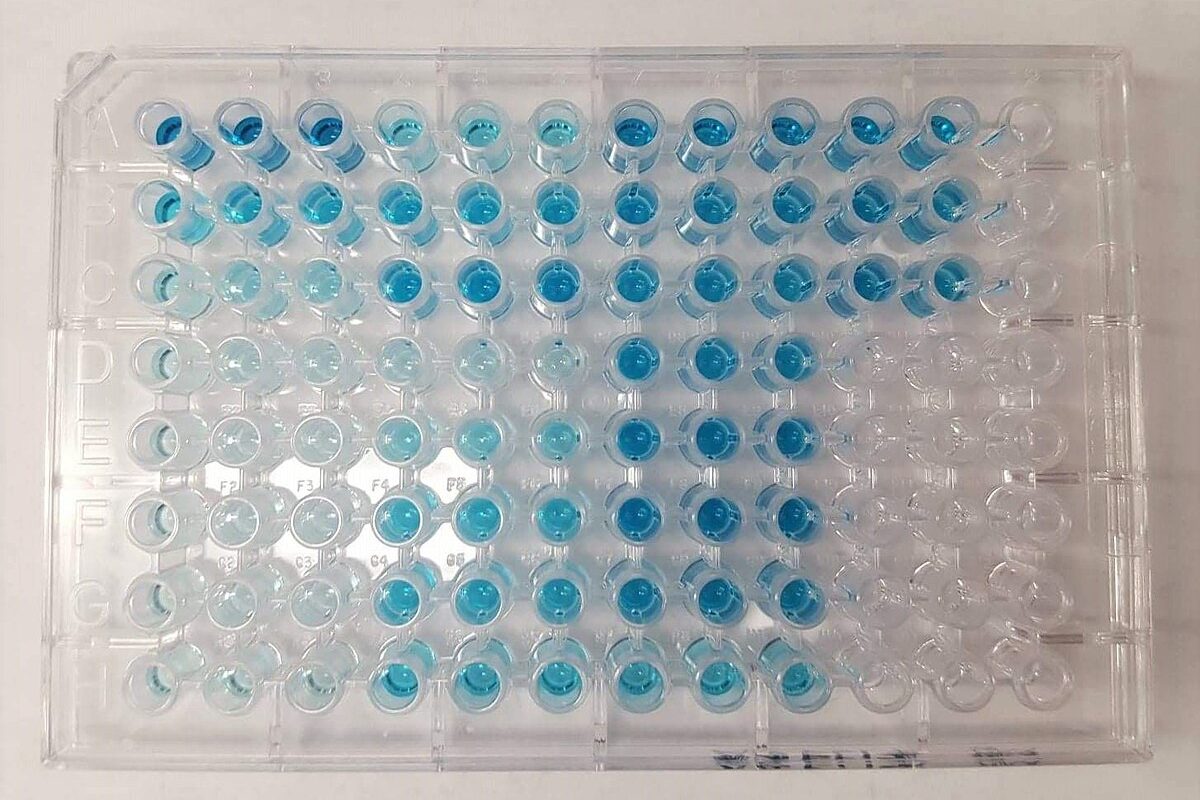Enzyme Linked Immunosorbent Assay or ELISA is a biochemical technique used mainly in immunology to detect the presence of an antibody or an antigen in a sample. This analytical biochemistry technique is very valuable for both diagnostic purposes and detecting antibodies produced during various immunological processes like immune response or disease detection.
How does ELISA work?
ELISA works on the principle of specific binding of antibodies to antigens to detect the presence of proteins, peptides, hormones and antibodies in biological fluids like serum, plasma, urine etc. In a typical ELISA, one of the binding molecules is immobilized on a solid surface usually the bottom of a well in a microtiter plate. Then the ELISA plate is washed to remove unbound molecules and a detection antibody labeled with an enzyme is added. This detection antibody binds specifically to the target molecule that has been immobilized. After another round of washing, a substrate for the enzyme is added. The enzyme catalyzes a reaction that produces a colored or luminescent product, which can be easily measured. The intensity of the color produced is directly proportional to the amount of target molecule present in the original sample.
Types of ELISA
There are four basic types of Enzyme Linked Immunosorbent Assay commonly used based on their format and purpose:
Direct ELISA: In this type, the antigen is coated directly onto the wells and a detection antibody is used to detect it. This format is used to detect antigens.
Indirect ELISA: Here the antigen is coated and then a primary antibody specific to the antigen is used for detection. An enzyme-labeled secondary antibody is then used to detect the primary antibody. This format is commonly used to detect antibodies in a sample.
Sandwich ELISA: In this format, two antibodies that bind to different sites on the target antigen are used. One is coated onto the plate and the other one is used for detection along with an enzyme label. This is a very sensitive method used to detect and quantify native antigens.
Competitive ELISA: This technique uses a known fixed concentration of labeled antigen that competes with unlabeled antigen in the sample for a limited number of antibody binding sites. The amount of label detected inversely quantifies the amount of unlabeled antigen in the sample. This format is useful for detecting small molecule analytes like hormones, drugs etc.
Applications of ELISA
Due to its sensitivity, specificity, reproducibility and versatility, ELISA has applications across various fields of research, diagnostics and quality control:
– Serological diagnosis of infectious diseases: ELISA is the standard technique used for serodiagnosis of diseases like HIV/AIDS, Hepatitis, Lyme disease etc.
– Immunoassays: ELISA is commonly used to detect and quantify proteins, antibodies, hormones, cytokines and other biomolecules in various samples.
– Pharmaceutical industry: ELISA based kits are extensively used for drug and bioprocess monitoring, detection of contaminants and quality control.
– Food industry: Tests for allergens, pathogens, GMOs etc. in food are predominantly done using ELISA techniques.
– Plant and animal disease diagnostics: ELISA plays a vital role in diagnosing various plant and animal diseases.
– Research and development: ELISA finds widespread application in basic research areas like immunology, molecular biology and cancer for protein analysis.
Significance of ELISA
The enormous significance of ELISA can be summarized as follows:
– High sensitivity and specificity: ELISA yields very accurate results even when detecting minute quantities of target molecules in complex biological samples.
– Versatility: ELISA can be adapted to detect almost any antigen or antibody by using specific immobilized capture reagents.
– Automation: Modern ELISA systems are highly automated and can process large number of samples with less hands-on time.
– Rapid detection: ELISA provides results faster than alternative techniques used previously like agglutination assays or radiometric techniques.
– Wide applicability: Due to its sensitivity and simplicity, ELISA has found application across diverse fields like healthcare, food, agriculture, environment and basic research.
– Standardization: Commercially available ELISA kits make the technique standardized, reproducible and user-friendly for routine analysis.
*Note:
1. Source: Coherent Market Insights, Public sources, Desk research
2. We have leveraged AI tools to mine information and compile it



